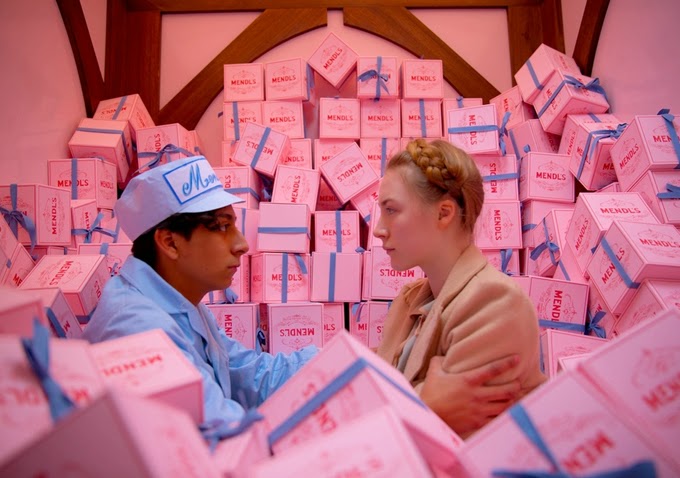Monday, April 14, 2014
The Grand Budapest Hotel
The cartoonish fancies of The Grand Budapest Hotel may appear at first like mere child’s play, but is there anyone more serious about play than a child? Wes Anderson’s latest film treats the interwar years as grist for a farcical caper, set in the whimsified European state of Zubrowka, where even the Sig runes of the SS have been transformed into the pink insignia of the no-less-threatening Zig Zag Division. Anderson crafts a world of immaculate balance and clockwork precision, but the violence of the Second World War lurks within this marvelous machinery as well (it’s all fun and games until someone loses a finger—or head). M. Gustave, the hotel’s concierge, displays a fetish for wealthy octogenarian lovers, and there is no better encapsulation of the film’s idiosyncratic combination of decay and decadence. Everyone seems suspended between the twin horrors of the two great wars, and the temptation to look down is surely hard to resist. Perhaps there are still glimmers of civilization amid the barbarity, Gustave says. But, as he also says, fuck it. Sometimes the abyss wins.
This white-capped never-never land is little more than a story of a story of something too fantastic to have even been believable in the first place, but the fantasy still succumbs to the inevitable degradations of time. Gustave’s commitment to the doomed elegance of the Grand Budapest can only mask the cracks in the foundation for so long. This is not only the illusion of grace—as his protégé Zero says—but also the grace of illusion. The film exalts in artifice while acknowledging its limits. Nothing can preserve this place, and the link between old world and new is severed with the simple tearing of a scrap of paper containing a feeble, forgotten promise of hospitality and respect. It’s a fitting symbol for the end of a place that ultimately exists only on the page: the film’s nesting doll structure leaves the vanished hotel immortalized within the pages of a book read by a girl in a cemetery decades later. All that remains of the vibrant Grand Budapest are frail words on a white page in a grey world. In a particularly striking touch, each one of the film’s different eras is filmed with a different aspect ratio, moving from a confining square in the past to a more expansive widescreen view as it nears the present. The world grows wider, yet there seems so much less to see.
Subscribe to:
Post Comments (Atom)


No comments:
Post a Comment